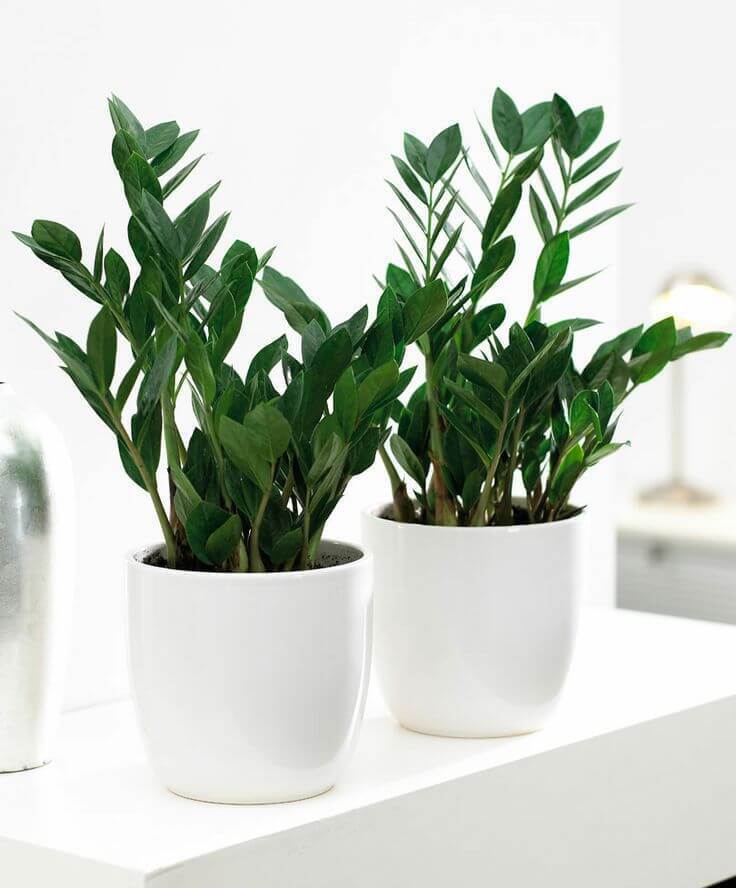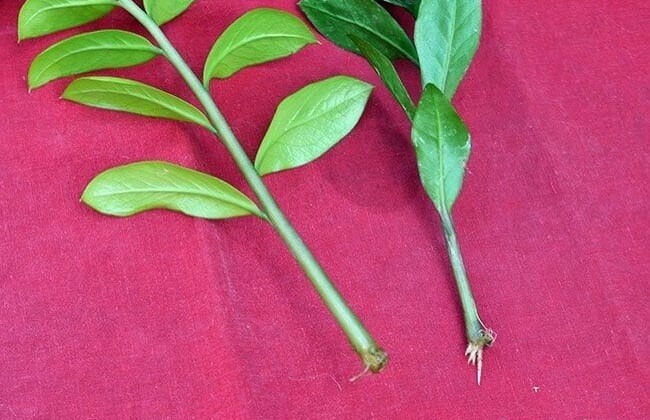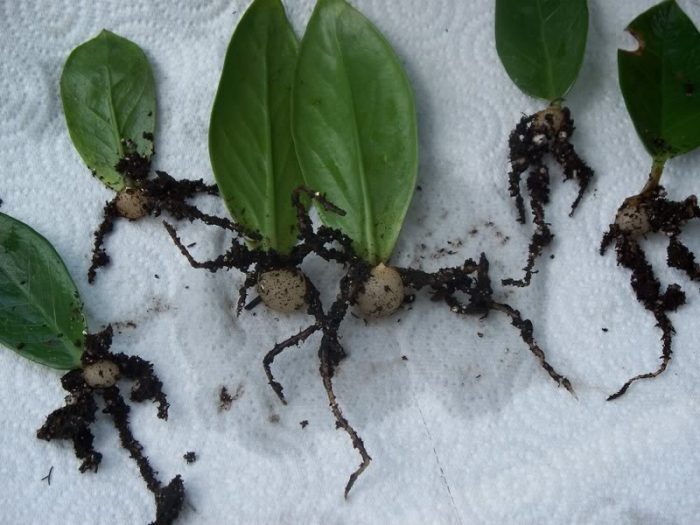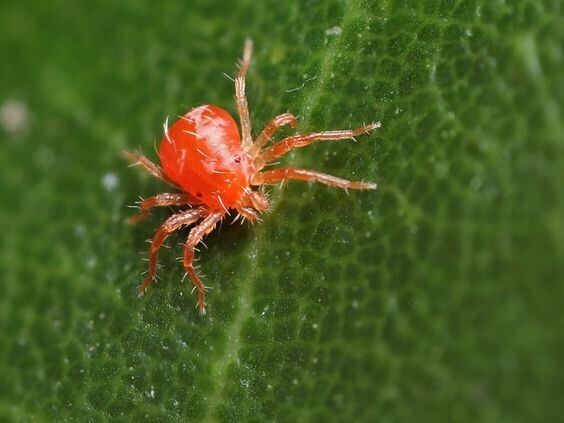A complete guide to the care and introduction of the Zamophilia flower

This plant is popularly known as a plant that is much more difficult to destroy than to maintain, and is called the so-called comedy plant. Because this plant has a tuber or rhizome and can store water for a long time and is compatible with low light, so buy zamophilia for those who are looking for resistant plants, do not have the patience to maintain flowers and plants, their living environment is without light. Either it is low light or it is recommended for those who are beginners in maintaining flowers and plants.
According to Iran Tree, this plant is native to tropical regions such as East Africa, South Kenya to Northeast South Africa, which can be seen in green, black or black colors, the length of the branches of this plant reaches 120 cm and has pairs of leathery leaves. It grows on both sides of the branch and rarely falls.
In this article, we intend to discuss fully and comprehensively about how to keep Zamophilia, its characteristics, methods of propagation, types of Zamophilia, its diseases, advantages and disadvantages, guide to buying Zamophilia and common questions you face regarding this plant. Stay with us.

How to maintain zamophilia:
In general, zamophilia is considered as one of the low-expectation plants with easy maintenance that anyone can easily take care of at home or at work, but this plant, like other plants, has key points in maintenance and cultivation that knowing They can have a lush and evergreen plant.
Suitable light:
Zamifolia is placed in the category of plants resistant to low light, which survives well in the shade or artificial light such as growth lamps. But due to the fact that this plant is native to humid and tropical regions, it reaches maximum performance and grows rapidly in places where there is a lot of indirect light. Therefore, it is better to place the plant at a certain distance from a window where the first morning sun or the evening sun, which is a relatively soft light, will shine on the plant.
Keep in mind, don’t expose the plant to direct light in the middle of the day, which is intense, because excessive heat from the sun will cause lethargy and bending of zamophilia leaves.
Suitable water:
Zamophilia is one of the low-water plants, in case of excessive watering, the roots of the plant will rot and as a result, the stems of the plant will start to loosen and then separate from the tuber.
The amount of Zamophilia irrigation has a direct relationship with the ambient heat, ambient light and humidity around the plant, and in general it should be noted that Zamophilia has a better relationship with dryness, so as a result, whenever you have doubts about re-watering, it is better to do the watering. do not give
With all these talks, if the environment is in a balanced condition, it is better to re-irrigate every 10 to 15 days.
Irrigation must be done with stagnant water that has been in the open air for 3-4 days and its chlorine has disappeared. For this purpose, you can pour water in a pitcher or soda bottle and leave the lid of the container open and pass it next to the plants so that in addition to providing moisture to the plants, you can irrigate with it and make sure that the water drains out of the pot over time. .
Suitable temperature:
According to its habitat, zamophilia prefers relatively warm weather and is one of the heat-resistant plants. But this does not mean that you should expose this plant to the intense heat of the sun or next to heat sources, because it causes the leaves of this plant to burn and mature. If you want to know the symptoms of heat stroke, it is better to read the following article.
Symptoms of heatstroke in plants
The best temperature for this plant is between 15 and 30 degrees Celsius, which is considered as the ideal temperature. If the air temperature is too hot, it is better to spray around the plant with a sprinkler. Also, temperature lower than 8 degrees is not recommended for this plant.
Humidity:
Due to its leathery and relatively fleshy leaves, this plant has relatively little evaporation through its leaves, and in other words, the humidity of the environment is sufficient for the plant. But if the environment around the plant gets too hot, especially in the summer season, it is better to use the dusting method around the plant.
Suitable fertilizer:
Zamophilia, like other plants, need fertilizer. If you want your flower to have a good and fast growth, it is better to use general fertilizers, npk fertilizer with a ratio of 10-10-10 and special fertilizers for this plant.
Also note that the soil of this plant loses its useful substances after some time and turns into waste, so it is better to replace the new soil with the top soil of the pot every six months (not completely replace the soil) and every Replace the plant soil completely every year.
Cleaning the leaves
The zamophilia plant is naturally susceptible to dust, so it is better to clean its leaves with chlorine-free water and a soft cloth every month. Pay attention not to use chemicals.
If you want to use glossy sprays, it is better to choose the organic type
Suitable soil:
This plant should have a light, porous and well-drained soil so that water can easily pass through it and get out, so that it does not cause root rot due to the sensitivity of the zamophilia tuber to excessive watering.
The best soil based on the mentioned factors is a combination of soil and ready fertilizer and cactus soil so that you can avoid waterlogging of the plant soil.
If you decide to plant zamophilia in the lobby of the tower or commercial centers, it is better to pay attention to the soil and the soil depth.
suitable pot:
You should know that plants need a tight environment to grow better, so that instead of spreading the roots in big pots, they spend their energy on growing new leaves; Therefore, change the pot when the roots protrude from the pot. But if after several years, you decide to change the pot, you have to follow some points that we will explain below. you have.
To replace the zamifolia pot, be sure to do it in the spring, don’t suddenly enlarge several pot numbers, for example, if you use a 20 cm pot, the next pot should be 25 cm in diameter, and also note that the pot must have drainage. and have a hole and the water will easily come out of the pot.
Then fill the bottom of the pot with a depth of 2 cm with mineral puck and pour soil on the pucks to provide a suitable height for planting the plant, then remove the plant from the old pot and place it in the new pot. Note that the roots should not be exposed to air for a long time.
At this stage, it is better to remove the rotten and damaged roots from the plant. Finally, pour about 3 cm of soil on the plant. Note that to fill the empty space of the pot with soil, do not press the top of the soil too much because it will damage the plant, then water the plant with chlorine-free water. until the water comes out from under the pot. If the soil settles after watering, add soil again.
If you plan to plant this plant in luxury and large pots, it is better to plant the plant in a suitable plastic pot first and then place it inside the pot you want and decorate it with pumice or stones.

Zamophilia flowering:
If all the ideal conditions are provided for this plant, this plant will flower in the summer season and the flowers will grow in the form of spots and white in color. The flowers of this plant are mostly used for pollination or seed production and are decorative and It is not beautiful.
If the flower grows, it is better to pick it so that the high energy for the growth of the flower reaches the stem of the leaves. In general, the growth of flower branches for zamophilia is a sign of the health of the plant and the suitability of the conditions around the plant.
Zamifolia symbol:
This plant is a symbol of dedication, stability, growth, balance, and if you place it in the right place in your home or office, it can be known as a plant of wealth.
Types of zamophilia:
The green type of this plant is the oldest one that was found in the flower and plant markets. But today, you can find more variety of Zamophilia types and according to your taste, you can choose one of the Zamophilia Black, Zamophilia Ablaq, Zamophilia Green, etc., which we will explain about each of the Zamophilia species below.
1. Green zamophilia – zz plant
Green zamophilia is the type that is available in most regions of the world. This species is considered to be the oldest species and before other species alone it was known as one of the most popular houseplants.
Maintenance:
Light: indirect bright light and partial shade
Watering: Water only after the soil is completely dry. Even if you sometimes forget to water the plant, do not worry at all, because there will be no problem for your plant. It is better to know that excessive watering causes many problems in green zamophilia.
Soil: Any light soil with good drainage is suitable for zamophilia green.

2. Zamophilia Black – Raven
In English, Zamophilia Black is called Zamophilia Black Crow. This name is due to the dark purple and almost black leaves of this plant. This species is relatively new and is considered one of the rare species. The new leaves may be green at first, but over time they will turn the same dark purple and blackish color and multiply the beauty of the plant.
Maintenance:
Light: This black plant is resistant to all kinds of light conditions. From low light to bright and high light is suitable for this plant.
Watering and humidity: zamophilia black survives well in houses with low humidity. This drought-resistant plant can even survive for several weeks without watering. Allow the soil to dry between waterings.
Soil: light soil with high drainage is suitable for this species. If the soil does not have proper drainage, water remains in it and causes root rot.
3. Zamofilia Ablaq – whipped cream
One of the very special types is Zamophilia Ablaq, which is also called Golden Zamophilia because of the cream and golden veins on the leaves. This species is very special and rare and therefore has a very high price.
Maintenance:
Light: To maintain the color of the leaves, it needs more light than normal zamophilia.
Irrigation and humidity: Zamophilia is generally drought resistant. To water the plant, you must first check the soil, if it is completely dry, water the plant.
Soil: A light soil such as a mixture of cocopeat and perlite with high drainage is suitable for Zamophilia Ablaq.

4. Zamicro (Dwarf Zamophilia) – Zamicro
Dwarf zamophilia or zamicro is another type of zamophilia that is smaller than other zamophilia. The height of Zamicro does not reach more than 50 cm. The shape, color, and size of the leaves of this plant are exactly the same as the green zamophilia, and only the thickness of the leaves is different, and it is suitable for people who prefer their plants to occupy less space and be smaller.
Maintenance:
Light: indirect bright light and partial shade
Watering: Water only after the soil is completely dry. Even if you sometimes forget to water the plant, do not worry at all, because there will be no problem for your plant. It is better to know that excessive watering causes many problems in green zamophilia.
Soil: Any light soil with good drainage is suitable for zamophilia green.
Decoration design:
One of the characteristics of this plant is its use in interior decoration and environments without light. Because in addition to beauty, harmony with the theory of feng shui in the use of plants and its positive effect on the flow of energy, its maintenance is very simple and suitable for beginners.
Considering its shape and image, this plant is a suitable option for spaces that want to have a minimal environment. Therefore, we recommend the use of this plant to interior decoration designers.
Purify the air:
Based on published scientific articles, this plant is one of the plants that produce oxygen and purify the air in the environment. This plant absorbs gases in the air such as trichloroethane, formaldehyde, xylene, etc., which are harmful to people’s health.
You should know that the main cause of headache and nausea is trichloroethane gas. It is interesting to know that in Tanzania, Zamofilia plant is used to relieve local pain. Of course, eating zamophilia is not recommended at all due to its toxicity
Suitable for plant propagation classes:
One of the plants that has a simple propagation method is the Zamophilia plant, which can be used in schools or flower and plant schools.
Pruning zamophilia:
In general, this plant does not need to be pruned, but if there are yellow or brown or dry leaves or stems, it is better to separate them from the plant so that the energy of the plant reaches its healthy parts.
Proliferation of zamophilia:
This plant is propagated in several ways, of which propagation through leaves is one of the most common.
Propagation by tuber division:
In this method, we separate the tubers of the plant through the roots so that each tuber has a branch and a leaf, then we transfer each of the tubers to small pots and use rooting fertilizer. Be careful not to damage the roots and tubers during separation. do not enter This method will work with 90% probability.

Propagation by stem:
This method is not very common and it takes some time and you have to wait. In the first step, we separate the stem from the leaves. It is better that the stem is not too long, then we put the stem in water and put it in a warm environment. It is also necessary to change the water in the pot every 2 weeks and use non-chlorine and boiled water.

Propagation through leaves
Cutting through leaves is one of the most common methods of zamifolia propagation and it takes about one year. In this method, you separate the leaves from the connection to the stem. You put it in the open air for 3-4 days so that the plant closes and dries. Then we put the bottom of the leaf in the rooting solution and put it in the mixture of cocopeat and perlite. In the next step, we water the top of the soil with a spray and put a plastic on it.
Diseases of zamophilia:
You may encounter various problems and diseases while keeping zamifolia. We will mention the most common ones in this section.
The cause of zamifolia leaf yellowing:
Zamifolia root is fleshy. These roots have a high ability to store water for a long time. From this day, excessive watering of zamophilia causes the roots to rot and die, and as a result, the leaves of this plant turn yellow.
To avoid this problem, it is better to check the soil of the plant before watering and make sure that the plant is completely dry, then start watering.
Of course, the yellowing of zamophilia leaves has other reasons, such as lack of nutrients or not changing the soil for a long time.
Browning of leaf tips:
If the tips of zamifolia leaves turn brown, you should increase the humidity around the plant. For this, you can use island construction or dusting.
Fading and thinning of leaves:
This problem is mostly seen in newly grown stems. Of course, this lack of color is normal at the beginning of growth, but if you are justified with this problem for a long time, it is a sign of low ambient light. Therefore, it is better to move the plant to a brighter place or use growth slides.
Bending of the Zamophilia stem:
The main reason for the loosening and bending of zamifolia is the lack of light. To solve this problem, you need to move the plant to a brighter place. Also, not changing the pot and making the pot smaller makes the plant unable to maintain its balance, as a result, the branches bend to the sides.
Common pests:
No matter how resistant plants such as Zamophilia are, they may encounter pests, although it should be said that because Zamophilia is a poisonous plant, it suffers less from pests. In this section, we describe the common pests of zamophilia, but if you want to fully deal with the pests of this plant, it is better to read the article on zamophilia diseases mentioned above.
Spider mite:
This pest is observed especially in the dry season. Seeing spider webs under the leaves of this plant is a sign of this pest attack. If you see this pest, immediately separate the plant from other plants, then use an acaricide poison. Of course, you can wash the plant with a little water pressure, then cover the pot with a bag and close it tightly. Place the plant in a bright place for a few days. After a while, you will see that the mites disappear.

Aphid:
Aphids are very tiny creatures. But if you see that the plant has become sticky, it is the reason for the attack of this pest. To eliminate this pest, you can use a solution of soap and water and a soft cloth.
Mealybug:
This type of pest uses the sap of the plant and after some time it weakens the plant.
There are two ways to get rid of this pest: 1- special poisons for mealybugs 2- using a solution of soap and water and a soft cloth that must be spread over the plant manually.






